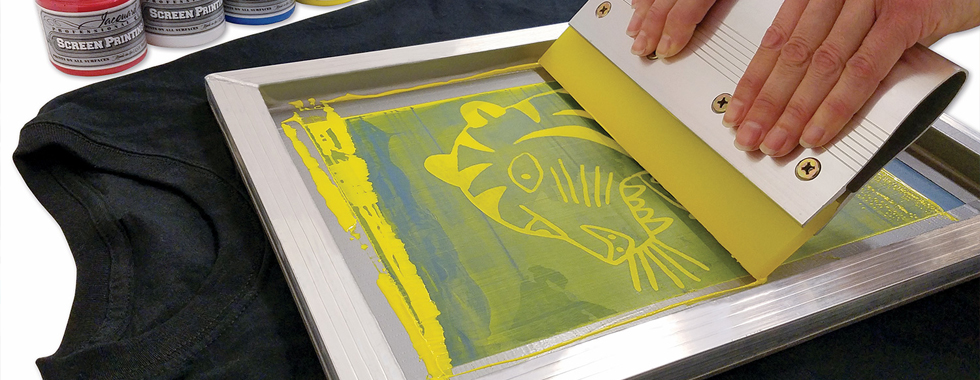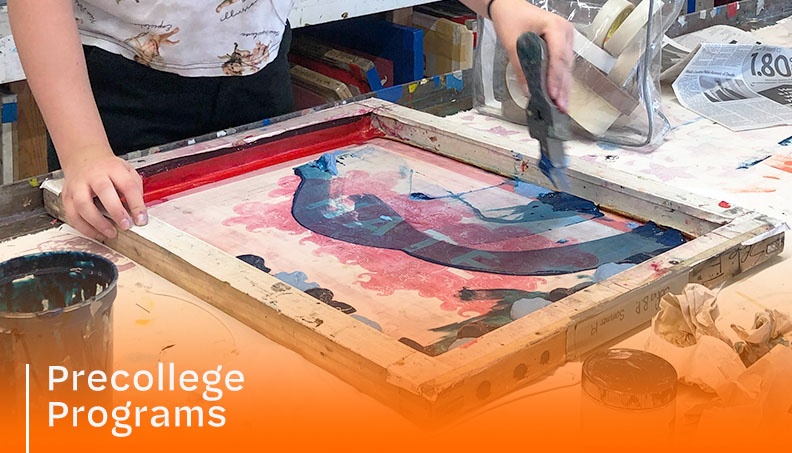ChatGPT said: 10:9 Design reviews: uncovering the customer verdict
The Essential Guide to Understanding Screen Printing and Its Versatile Utilizes
Screen printing has a rich history that dates back to ancient times, progressing right into an advanced method made use of across various markets today. This overview discovers the intricacies of the screen printing process, outlining its applications in home, advertising, and style design - 10:9 Design Screen Printing. Understanding these principles can open innovative capacity for both industrial and imaginative projects. The following areas will certainly reveal important tips and techniques to boost one's screen printing undertakings
The Background of Screen Printing
Although screen printing has origins that map back centuries, its evolution reflects the technological and artistic innovations of numerous societies. Coming from ancient China, the strategy was initially utilized for decorating fabrics and later spread to Japan, where it became indispensable to Ukiyo-e woodblock printing. The technique shifted to Europe in the 18th century, where it acquired popularity amongst artisans and commercial printers. The invention of photo emulsion in the 20th century revolutionized screen printing, enabling even more elaborate styles and greater effectiveness. Musicians like Andy Warhol even more thrust its appeal, using the tool to create famous jobs that combined commercialism and great art. By the late 20th century, screen printing had actually established itself as a flexible method, used in vogue, advertising and marketing, and great art. Today, it continues to progress, incorporating electronic technology and expanding its applications across different markets.
The Screen Printing Refine Explained
Screen printing changes imaginative visions into tangible styles via a series of specific steps. A picture is created and after that transferred onto a screen, typically made of great mesh material stretched over a framework. A light-sensitive emulsion is put on the screen, which is revealed to light, hardening in areas not covered by the image. After washing out the unhardened emulsion, a pattern is created.
Next, the screen is put over the substratum, whether it be fabric, paper, or an additional product. Ink is then pushed via the open locations of the pattern making use of a squeegee, depositing the design onto the substrate listed below. This process can be duplicated for several shades, calling for different screens for every shade. The published product is cured using warm to guarantee the ink sticks effectively, resulting in a durable, lively layout all set for usage.
Kinds Of Screen Printing Techniques

In addition, specialty strategies, such as discharge screen printing, get rid of color from the fabric to develop softer prints, while aluminum foil screen printing uses metallic foil to achieve a glossy coating (10:9 Design reviews). Each strategy uses unique qualities, providing to different innovative needs and manufacturing ranges, inevitably broadening the possibilities within the screen printing domain
Applications of Screen Printing in Various Industries

In here addition, the signage and marketing fields utilize screen printing for developing eye-catching display screens and banners. This method permits strong colors and detailed layouts that capture interest. In electronics, screen printing is employed for applying conductive inks to circuit boards, necessary for component connections. The home decoration industry welcomes screen printing to create distinct styles on fabrics and wall surface art. Overall, screen printing works as a critical device across varied fields, boosting products with individualized and visually enticing graphics.
Tips for Successful Screen Printing Projects
While undertaking a screen printing task, cautious interest to information can substantially improve the final result. Picking high-quality products is crucial; this consists of the screen, inks, and substrates. Using ideal mesh counts can affect ink deposition and information resolution. Preparation is just as essential; thorough cleansing of screens and correct exposure times assure crisp prints.
Next, exact enrollment is crucial for multi-color prints. Utilizing placement tools can assist achieve precise layering. In addition, testing prints on scrap materials before production aids determine prospective concerns without throwing away resources.

Often Asked Inquiries
What Products Are Ideal for Screen Printing on Fabric?
Cotton and polyester blends are suitable for screen printing on material because of their toughness and ink absorption. In addition, specialty fabrics like silk or canvas can generate unique appearances and surfaces, enhancing the total layout quality.
How Do I Tidy and Maintain Screen Printing Tools?
To cleanse and preserve screen printing equipment, one should routinely wash screens with suitable solvents, evaluate mops for wear, oil moving components, and shop all things in a completely dry, dust-free atmosphere to lengthen their lifespan.
What Are the Ecological Effects of Screen Printing?
Screen printing can have significant environmental impacts, including chemical waste from solvents and inks, water use throughout cleaning processes, and power intake. Environmentally friendly products and sustainable techniques are important for decreasing these unfavorable results.
Can Screen Printing Be Done in the house Effectively?
Screen printing can be efficiently done at home with the ideal materials and techniques. Hobbyists can develop quality prints, though success depends on their skill level, devices, and understanding of the procedure included.
What Are the Costs Associated With Beginning a Display Printing Company?

Beginning a screen printing business includes prices for devices, materials, and work space. Preliminary expenses typically vary from a few hundred to numerous thousand bucks, depending on the range, high quality of machinery, and wanted manufacturing ability.
Screen printing has a rich background that dates back to ancient times, advancing right into an advanced strategy made use of throughout various sectors today. One more technique, rotating screen printing, utilizes cylindrical screens, promoting constant printing on fabric rolls, consequently enhancing effectiveness for large-scale manufacturings. Furthermore, specialized techniques, such as discharge screen printing, get rid of dye from the textile to produce softer prints, while aluminum foil screen printing uses metal foil to attain a glossy surface. In the style field, screen printing is widely utilized to create lively designs on clothing, enabling brands to showcase their special styles. Cotton and polyester blends are excellent for screen printing on material due to their resilience and ink absorption.